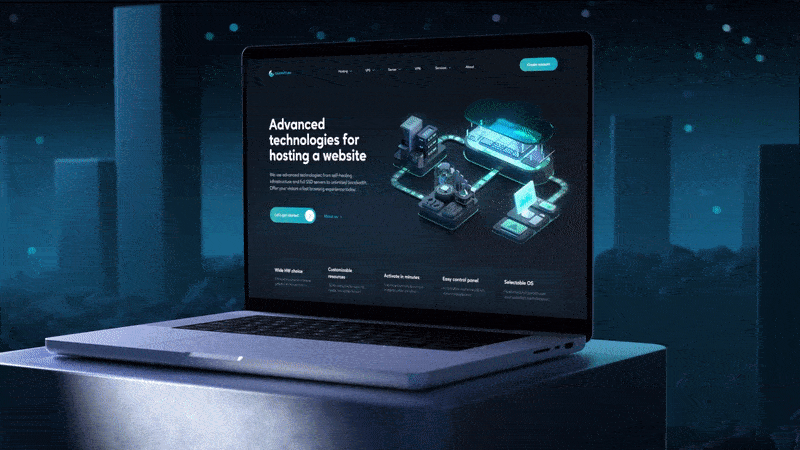UI/UX Design Trends in the GreenTech Sector – 2024 Outlook
As we delve into the year 2024, the greentech area continues to evolve, embracing new UI/UX trends that are transforming the landscape of renewable energy systems and electrical installations. This article will explore these exciting technological advancements, their impact on process optimization, customer response, and service quality improvement in the greentech industry.
Table of content
Table of Contents
We’re on board to help with your product. Don’t hesitate to get in touch.
Contact Us Let’sTalk
As we delve into the year 2024, the greentech area continues to evolve, embracing new UI/UX trends that are transforming the landscape of renewable energy systems and electrical installations. This article will explore these exciting technological advancements, their impact on process optimization, customer response, and service quality improvement in the greentech industry.
Innovations in Process Optimization
Generative Design
Generative design has emerged as a major trend in UI/UX, utilizing artificial intelligence and algorithms to create dynamic and adaptable user interfaces and experiences. This technology can automate layouts, color schemes, typography choices, and even content based on user interactions, data inputs, or predefined parameters, enhancing the efficiency of greentech systems like never before.
Augmented Reality (AR)
AR technology has been gaining traction in recent years, with its popularity expected to surge again in 2024. With AR, the physical world can be merged with the digital space, providing users with a unique interactive experience. This technology can be a great asset in developing educational apps or projects that assist users in hazardous environments such as electric vehicle charging stations or solar panel installations.

Enhancing Customer Response and Service Delivery
Bold Typography
Typography plays a vital role in capturing user attention and injecting personality into the interfaces. More assertive and larger-than-life fonts are trending in 2024, creating a visual hierarchy that guides people through content effortlessly. When designing a greentech platform, bold typography can be strategically used to highlight key services and products, eliciting quicker customer responses.

Complex and Animated Gradients
In 2024, gradients have become a prominent force in the UI/UX design landscape, significantly transforming how user interfaces are perceived. Serving as a gateway to more immersive and visually captivating user experiences, gradients effectively infuse depth, richness, and a heightened level of sophistication into various UI elements, including backgrounds and headers. Crucially, this trend can be strategically leveraged to elevate the aesthetic appeal of greentech platforms, thereby making them more enticing to prospective customers.

By seamlessly blending multiple hues, gradients create a dynamic and engaging visual experience. This technique not only enhances the visual appeal but also guides the user’s attention through the interface. Consequently, when applied to greentech platforms, gradients can play a pivotal role in showcasing the platform’s innovative nature and forward-thinking ethos. This can be particularly effective in attracting environmentally conscious users who value both functionality and aesthetic elegance in digital platforms.
Technology-Driven Service Quality Improvement
Glassmorphism
Glassmorphism is a trend that incorporates depth, transparency, and frosted glass aesthetics into digital interfaces. This effect can be applied to various UI elements, such as cards, modals, or navigation panes. Implementing this design trend in greentech platforms can provide a modern and sophisticated look, enhancing the overall user experience.

Parallax Effect
The parallax effect, a visual technique often used to create depth and a sense of immersion on a website or app, can enhance the user interface’s visual engagement. This effect, when applied to greentech platforms, can provide a smooth and enjoyable experience, enhancing service quality.

Honorable Mention: More Design Trends
WebGL/3D
In recent years, the integration of 3D graphics has significantly evolved web design. Advancements in WebGL, a powerful JavaScript API, have driven this change. WebGL enables designers and developers to render both 3D and 2D graphics directly in web browsers without needing plugins. This technology has opened up a wealth of possibilities, allowing for the creation of intricate 3D illustrations, dynamic animations, and interactive 3D objects.

Algorithmic Grids
Another emerging trend in the realm of web design is the use of algorithmic grids. These grids represent a strategic approach to layout design, particularly beneficial for websites with extensive content. The main goal of algorithmic grids is to segment long reads into multiple logical sections, thereby effectively controlling the viewer’s attention and improving the overall readability of the content.

Animations
Entering 2024, animations and micro-interactions continue to be pivotal in shaping user experiences. The focus of these dynamic elements has gradually shifted towards emotional engagement and the context of the design. This means that animations are no longer just decorative elements but are integral in making interfaces more interactive, engaging, and appealing.

Conclusion
The year 2024 brings a myriad of exciting UI/UX trends to the greentech sector. These technological advancements are not merely about aesthetics; they aim to create experiences that leave a lasting impression, drive success for greentech products, and ultimately lead to a more sustainable future.
If you are seeking to leverage these UI/UX trends for your greentech product, get in touch with us. Our team of experienced designers can help design a product that stays relevant in the forthcoming years and attracts your target audience.


